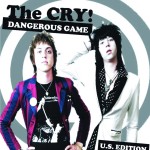 Dangerous Game (U.S. Edition)
Dangerous Game (U.S. Edition)
Top Shelf Records
Supposedly, the term “Power Pop” was coined by Pete Townsend around 1967 in describing the Who’s music (and that of the Small Faces as well). In essence, he could have been describing any number of bands releasing records at the time—first and foremost, the Beatles. Check out “Daytripper” from ‘65. Take a listen to “Ticket to Ride” and “Paperback Writer” from 1966. That stuff is sheer Power Pop—crunchy on the outside, but all squishy in the middle. Smart guitars, no solos—or very few past a signature riff, straight ahead beat, accessible lyrics and a big fat hook somewhere within the first sixty seconds, at most.
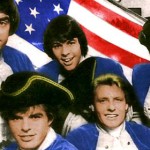
Power Pop was rife in the mid to late ‘60s, up to and including the Beach Boys and Portland’s own Paul Revere and the Raiders. But the term itself didn’t really catch on until later in the ‘70s. Before that, it was pretty much just Top Forty chart stuff. It was all either Power Pop or Soul. Maybe it was Folk Rock like the Byrds or the Mamas and the Papas, or Hard Rock (hence Blues related) bands such as the Kinks, the Stones or Steppenwolf, etc.
From there the genre blossomed to full flower in the 1970s. Perhaps the quintessential Power Pop band of the ‘70s was Badfinger. The Beatles stripped down to a riff, a few harmonies and deep sentiment. Sure. That’ll always work—and always has ever since. The formula worked for the Bay City Rollers. It worked for Slade and the Raspberries, the Babys. The Move/ELO. Cheap Trick. So many more.
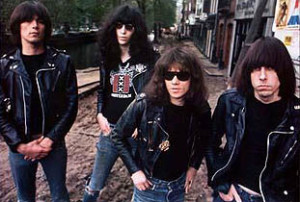
Bowie and T. Rex got all Glammy with it. The Eagles went country with it: leading to the advent of Dwight Twilley, Tom Petty and the like. It even worked for the Ramones and the Sex Pistols, though they were pretending to be rebelling against Power Pop. Instead they were the new, young, disillusioned and angry vanguard creating Power Pop for a new, young, disillusioned and angry generation. Gabba gabba hey!
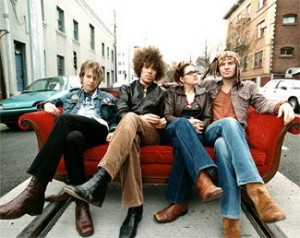
In the ‘80s the Romantics and the Knack were powerful Power Pop players. Divinyls. Rick Springfield. Split Enz/Crowded House. The Go-Gos embodied Power Pop, as did the Bangles. Tommy Tutone. The Cars were about as good as it gets, turning the genre in on itself with the droll, self-conscious pose the band struck. Tom Petty fathered REM who begat the Gin Blossoms, resulting in the Posies, which led to Cold Play, Jimmy Eat World and Fountains of Wayne. Our own Dandy Warhols fall in there somewhere, to be sure. Pure Power Pop.
So, we’ve established that Power Pop has been a flavor in the music marketplace for quite some time—consumed freely and abundantly by aficionados and other adolescence-addled brains since well before the term was even conceived. For, once something becomes popular, you can be pretty sure there is going to be a LOT of it around in very short order.
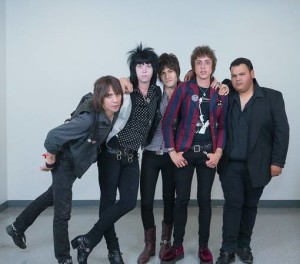
By those lofty standards borne of such hallowed traditions, we must approach the Cry! with some trepidation. For one thing, the concept of Power Pop has fractured. “Popular” music is now subject to all kinds of fandanglements that no longer mean much of anything other than being the product of some form of analysis or another. Taylor Swift, Katy Perry, Lady Gaga, Foster the People, One Republic, the Black Keys, Haim and Shazam! Looking for an in-depth study of what makes a hit song? Check this out. Pay special attention to Table 1 (well, to all of them really) and tell me: what’s happened to love, people?
The Cry! so neatly fit into all of this that you’d swear they’ve been there all along. Their music sounds instantly familiar, without being entirely derivative. And they neatly cascade across decades within the course of their presentation, sounding all ‘60s British Invasion on one track and ‘70s cheerleader rock on the next. ‘80s New Wave and Punk Lite bluster, it’s all there. No muss. No fuss. No bullshit.
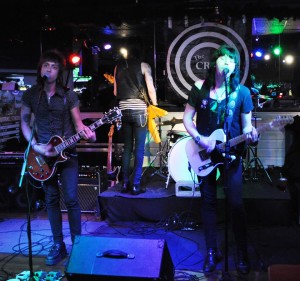
The core of the Cry! came together about five years ago, when guitarist/lead vocalist Ray Nelsen met lead guitarist/vocalist Brian Crace while both were still in high school in the Reynolds school district. The pair founded the Cry! in 2011, tinkering with the component players before arriving at the final line-up—which includes drummer Joey “Prude” Bewley from Spokane, Chicago native Mike Cortichiato on bass, and the most recent addition, guitarist/keyboardist Victor Franco, who hails from SoCal. “Corsh” and Franco also contribute occasional background vocals.
This quintet is certainly no “tribute” band or anything like that. They are as serious and as sincere as any Power Pop troupe can be. They drag out every rock and roll cliché in the vernacular and kick it around for a while, sounding like they invented the damn thing. Most of the fourteen songs presented here stick in your brain like gum stuck in your hair. The songs are expertly executed—if thoroughly predictable. Spot on, but no surprises. The Cry! seem not to be specifically copying any particular band(s). Not at all. They are simply of the ilk. They can hold their own with any of the competition.
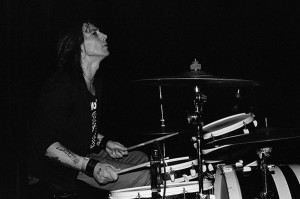
Clocking in at just over two minutes in length, the break-neck, jacked-up tempo of the lead track “Smirk” bounds upon the deft execution of a crisp riff and smart group performance. Tight. Nelson breaks out his thickest Billie Joe Armstrong, Green Day East Bay scouse to deliver the tell-tale line: “I just woipe that smirk roit off… of yer fice.” Bewley’s throbbing toms in the second verse beef up the presentation considerably.
The opening chords to “Discoteque” seem ripped from the AC/DC or Green Day playbooks, but I’ll be damned if I can figure out which page. It is so damn prototypical that the band really needn’t do anything more than that riff. Maybe add some cowbell. Open with that chord progression, play it eight or sixteen times. Launch into a solo—that length or longer. Go back to the opening chord progression and fade out with a solo over the top. Two minutes and a cloud of dust. That would be right up the Cry!’s alley.
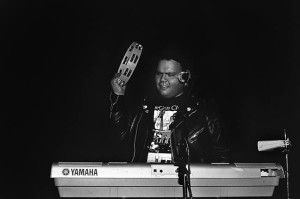
The Cry!’s version of events, however, is slightly less predictable, though based alone on that introductory riff would be enough to catch the typical listener’s attention, while drilling a hole through his brain. One thing about this band: they don’t spend a lot of time on exposition. They get right to the point. So before you even really catch on to the riff, they’ve been through a four-bar solo and are well into the first verse. No. Make that the second verse, actually, where Franco’s plinky piano calls to mind some early ‘70s Bowie arrangement (circa the Mott the Hoople years)—the vocal delivered with just the right mount of Robin Zander smugness. An array of digital guitars are flashing off flares all over the place—if there’s room anywhere for another hook, the boys have jammed something in there. They’re unrelenting.
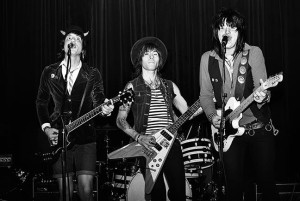
“Hanging Me Up” goes all ‘80s eighth note drive, sounding not unlike the The Vapors performing their only hit “Turning Japanese.” A certain circular vocal melody comes around from time to time. Sounding very much like early Cheap Trick, “Seventeen” seems dedicated specifically to the age demographic best suited for this material: most likely female. That is not at all a condemnation. That age seemed to work just fine for the Beatles when they first broke with a slew of songs that included “I Saw Her Standing There” (“well she was just seventeen…you know what I mean,” whatever the hell THAT’S supposed to mean).

Speaking of the early Beatles, “Waiting Around” combines “This Boy” with “Tell Me Why” to create a harmlessly peppy overture. It’s a put-on, echoing the Beach Boys in the turns, tongues plastered in cheeks—though, expert musicianship aside, this is not one of the band’s more sterling efforts. B-side material. But the ‘80s sensibility returns with “Sleeping Alone,” a song that harkens back to the days of English Beat/General Public, where Nelsen and Crace’s chunky beef guitars are wedged inside Corsh’s bubbly bass and Bewley’s tom-driven beat. Nice stuff.
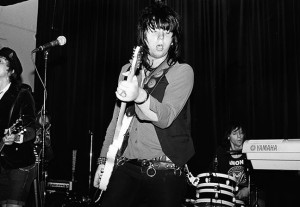
Attitude-wise “Nowhere to Go” could pass for a Ramones song—snotty enough—but more tightly rendered, more proficiently played. If the Ramones would have sounded as good as the Cry!, nothing would have ever happened for them because they would have been too good and the punks never would have accepted them. Sometimes life just turns out for the best.
A nice change of pace is the acoustic guitar/piano inflected ballad “Last Thing That I Do.” Think of Tom Petty leading the very early Heartbreakers through a sassy version of Van Morrison’s “Brown-Eyed Girl” (I don’t know, maybe such a thing exists already) and you’re circling in on what we’ve got here. Nelsen’s sneering vocals and Crace’s kick-ass lead make of this track the most radio-friendly of the fourteen presented—which is really saying something. It’s like a sampler of everything the Cry! is capable of creating—and that’s a lot!
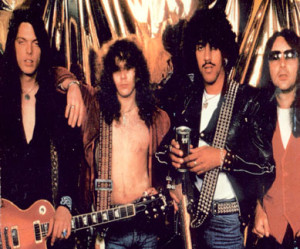
Jump cut to “I Think I’m in Love” (there are a lot of jump-cuts on this album—as if a silence any longer than a second might run the train of the average adolescent’s attention span off the tracks all together), a boisterous send-up in the fashion of Thin Lizzy. The boisterous Lynott-ish rap rolls free over the verses. But in the chorus, where the boys should heading back into town, the Cry! go the Rutles route and pull up with a Beatleseque pastiche eerily comparable to “I Must Be in Love.” They could have pushed a little harder on this one. A nice solo though.
Returning to the boogie rock at which they excel, “Down in the City” comes closer to the Zander/Cheap Trick template that works especially well for the Cry. Blowing through at 1:47, you barely have time to pick up the ditty on your sonic radar screen before you’re off to the next song. Nothing wasted… Zoom!

Thankfully for all parties involved, “Shakin’” has nothing whatsoever to do with Eddie Money’s 1983 release of the same name. Instead we are given a bouncy, Sweet-ish (“Ballroom Blitz”) rave-up with the memorable chorus: “Shakin’, shakin’ like a vibrator/Burnin’, burnin like a radiator.” Yow! Very tight ensemble playing locks down the homestretch. This band does not lack for chops.
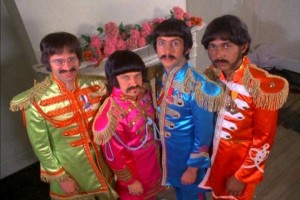
That Rutles reference isn’t meant frivolously. You hear the influence again on “Modern Cindarella.” It’s meant as a sincere compliment, as anyone who has heard any of Neil Innes’ dozens of song contributions to the Rutles oeuvre, and the expert production those songs received. That material was nearly equal to that it is imitating. Similarly the Cry! take their homage to the limit, squeezing every last ounce of anguished teen bravado from the lines: “Please, girl, please stay with me/Tonight is for lovers like us/But you don’t seem to love like me/So I’m headin’ home on the bus.” Well, who hasn’t been on that bus a time or two themselves? “
“Dangerous Game” has a distinct element of a “fuck you” vibe that any fan of Green Day or the Dandy Warhols would readily recognize. The music is more amped up and Cheap Tricked out than the Dandys, but the attitude and sentiment are very familiar. The bridge is a little off-kilter here, like a few bolts came loose in the landing, but aside from that, this is prototypical Cry! material.
And no, “Toys in the Attic” has nothing to do with Lillian Hellman or Aerosmith: although that’s a band the Cry! might study very carefully going forward. What we have in this instance is another hard-charging stampede of punkish ‘80s New Wave Pop, skillfully rendered.
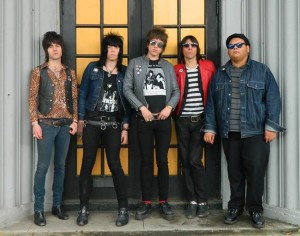 The Cry! are a very good young band. That much of their music seems rooted in the ‘60s, ‘70s and early ‘80s would mean that as children the members of the Cry! didn’t raid Dad’s record collection of Nirvana and Stone Temple Pilots. They raided Grandpa’s pile of vinyl. And they listened to that stuff real hard. To the extent that they have it nailed and can play it backwards, forwards and upside down.
The Cry! are a very good young band. That much of their music seems rooted in the ‘60s, ‘70s and early ‘80s would mean that as children the members of the Cry! didn’t raid Dad’s record collection of Nirvana and Stone Temple Pilots. They raided Grandpa’s pile of vinyl. And they listened to that stuff real hard. To the extent that they have it nailed and can play it backwards, forwards and upside down.
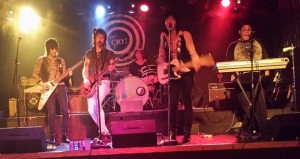
The fact that no one as young as these guys seems to be producing this sort of bombastic Power Pop any more would seem to open the door for the Cry!. They do not lack for the look or talent. But, as sophisticated and accurate as they are, they could still take their music up a notch to the level of Journey or Aerosmith. That would require vocal chops the Cry! don’t have yet. But I wouldn’t count these guys out. They know what they’re doing.
October 2014

